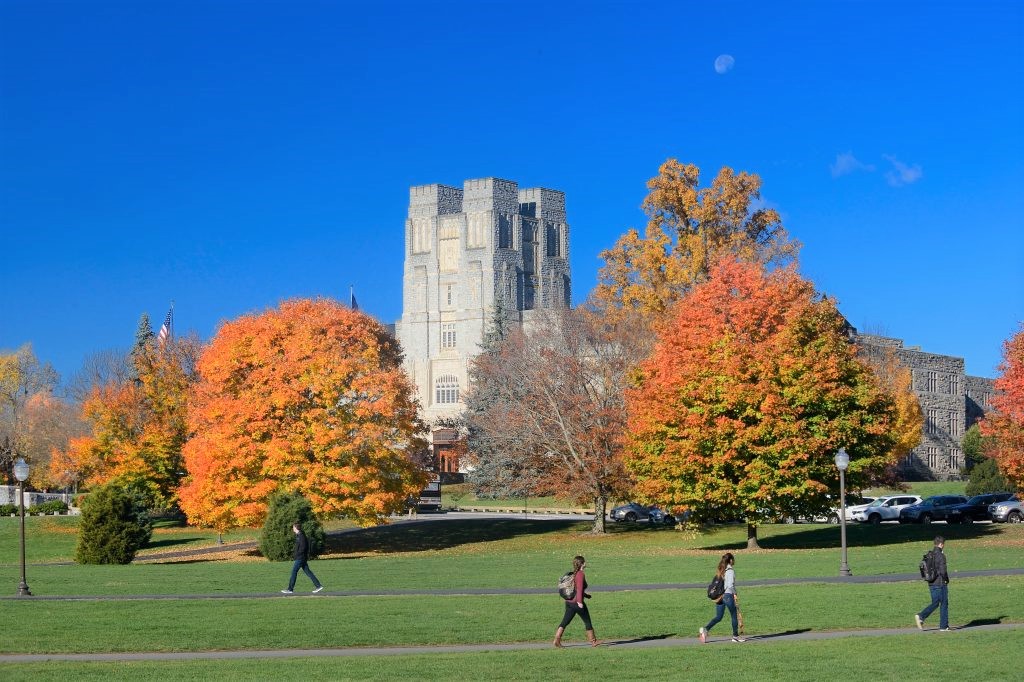 Virginia Tech tree physiology expert John Seiler says Virginia never really has a poor or average year for fall colors. It’s either good, better or best, and this year’s fall foliage colors may peak by the third week of October this year, about a week ahead of normal, according to Seiler.
Virginia Tech tree physiology expert John Seiler says Virginia never really has a poor or average year for fall colors. It’s either good, better or best, and this year’s fall foliage colors may peak by the third week of October this year, about a week ahead of normal, according to Seiler.
“I’m seeing some signs of things being a little early this year,” Seiler said. “A couple of particular ‘go to trees’ I monitor, they’ve already got some yellow in them. We may be a week early, in part because of the lack of long-term rain. Before the recent storms, we were drying out a bit. But that slow, steady drizzle should really help. Decent amounts of precipitation keep the leaves from dropping too soon. And because those vivid reds form in the fall, rain improves the outlook they’ll be bright and colorful.”
Seiler said Virginia never has poor fall foliage because of “the diversity and wide varieties of tree species here in Virginia. If one tree gets hurt by a hot dry August, there’s another species that didn’t. It buffers the bad weather like that. Our mountains offer constantly changing elevations and aspects, which lead to a higher biodiversity, which leads to a greater mixture of fall color.
“People should be looking at their calendars, picking a good Saturday or Sunday,” Seiler said. “Shoot for the time period starting around October 23 on through the end of the month. Plan your trip accordingly, check the weather and pick a good day when the sun is out. The colors look a lot better when there’s sunshine.”
Professor Seiler specializes in environmental stress effects on woody plant physiology, including water and pollutant stresses. He is quoted regularly in broadcast and print publications due to his expertise in tree physiology. Seiler is the Honorable and Mrs. Shelton H. Short Professor of Forestry at Virginia Tec, and was named an Alumni Distinguished Professor in recognition of his extraordinary academic citizenship and distinguished service within the Virginia Tech community. Seiler teaches in the College of Natural Resources and Environment.


